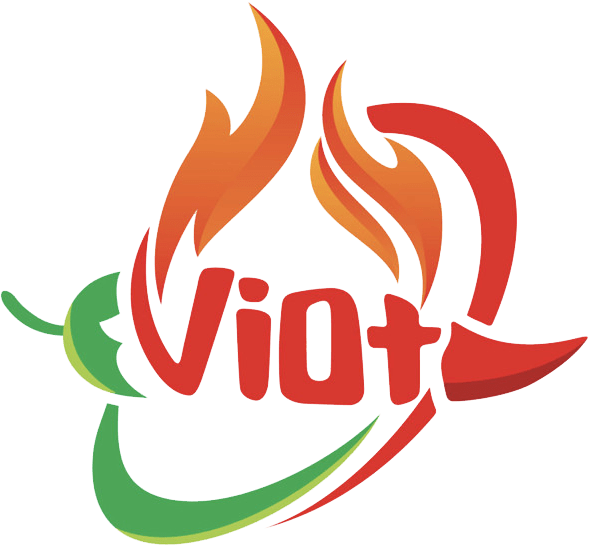Chili Peppers: A Spice that Stimulates the Taste Buds and Provides Nutrients – But Should Be Consumed in Moderation
Chili peppers are a popular spice that not only enhances the flavor of dishes but also provides vitamins, a small amount of protein, and fiber. However, while chili peppers offer many health benefits, consuming them in excessive amounts can have negative effects on your health.
Below is information from Dr. Nguyễn Hoài Thu, Vietnam Institute of Applied Medicine, about the benefits of chili peppers, the potential harm of overeating them, and tips on how to prepare and store chili peppers.
1. Nutritional Components in Chili Peppers
Chili peppers are rich in vitamins beneficial to health. They are commonly used as a flavor enhancer in dishes or simply due to personal preference. Not only that, but chili peppers contain a higher concentration of nutrients compared to many regular vegetables.
For every 100g of fresh chili peppers, they provide:
32% of the daily recommended intake of Vitamin A
240% of Vitamin C
39% of Vitamin B6
4.5% of Vitamin E
11.5% of Vitamin K
Just 40g of fresh chili peppers is enough to meet your daily Vitamin C requirement.

2. Health Benefits of Chili Peppers
Chili peppers contain capsaicin, the compound responsible for their spiciness and the irritation of mucous membranes upon contact. When mucous membranes are stimulated, they send signals to the brain, which in turn triggers the release of various substances—including endorphins, which act as natural painkillers. That’s why many people feel a “burning numbness” after eating chili; it’s not just the heat, but the body’s protective response through the release of pain-relieving compounds.
A study found that when 2.5 grams of red chili were consumed daily by individuals with heartburn, symptoms worsened during the first five weeks of treatment—but significantly improved over time.
Modern medicine is researching capsaicin and other chili compounds to develop pain-relief medications. The world’s spiciest pepper, measuring 2.48 million SHU (Scoville Heat Units), was bred specifically for medical purposes—not for culinary use.

Chili peppers offer numerous health benefits.
Chili Peppers and Weight Loss Support
Eating chili peppers not only improves blood circulation, but also helps support weight loss. Many individuals have reported effective results when combining chili peppers with diet plans. Here’s why:
First, chili peppers increase blood circulation and boost metabolism, helping the body burn more calories efficiently.
Second, eating chili triggers the release of various hormones that can reduce appetite and burn fat.
Third, the heat from chili consumption causes sweating, leading to water loss, encouraging hydration, and aiding in detoxification.

Dried chili peppers
3. Side Effects of Eating Too Much Chili
Burning sensation in the mouth:
Consuming excessively spicy chili can cause a burning sensation in the mouth and even lead to temporary loss of taste in the affected area. Capsaicin, the active compound in chili, can strongly irritate the sensitive tissues of the oral mucosa.
Stomach and digestive issues:
Spicy chili causes a burning sensation not only in the mouth but also in the stomach lining. Over time, frequent consumption of chili can negatively affect the stomach, especially for those already suffering from gastritis or stomach ulcers, as it can worsen the condition.

Chili Sauce
Abdominal pain and digestive discomfort:
Chili can cause intestinal pain in some people, including abdominal cramps, burning sensations in the intestines, and painful diarrhea. This is more common in individuals with irritable bowel syndrome (IBS). Chili may temporarily worsen symptoms in those not accustomed to spicy foods.
Not suitable for people with heart conditions:
The spiciness of chili increases heart rate and blood circulation. While moderate consumption can promote cardiovascular health and prevent blood clots, excessive or frequent intake may lead to heart strain, potentially increasing the risk of heart failure or stroke.
Possible nerve damage:
Chili not only stimulates hormone production but also affects the nervous system. Prolonged or excessive consumption of spicy foods can negatively impact the nervous system, possibly leading to partial numbness or even nerve damage. There have been cases of loss of taste or heightened irritability linked to long-term overconsumption of chili.

Chili fish sauce.
4. Who Should Avoid Eating Chili
People with hemorrhoids:
Both internal and external hemorrhoid sufferers should avoid spicy foods. Spicy chili can cause hemorrhoid swelling and increase pain or burning sensations.
People with heart disease, brain conditions, vascular issues, high blood pressure, chronic bronchitis, and lung diseases:
Chili contains compounds that increase blood circulation and heart rate. Over time, this can strain the heart and may even lead to heart failure or sudden death in serious cases.

Prolonged consumption of spicy food and excessive chili intake are harmful to health.
People with gallbladder inflammation or gallstones:
The stimulants in chili increase stomach acid production, causing the gallbladder to contract. This can hinder bile secretion, potentially leading to liver or pancreatic inflammation.
People with skin inflammation or acne:
Spicy food like chili generates internal heat, which can worsen acne or skin inflammation. Those with skin conditions should avoid it to prevent flare-ups.
People recovering from surgery or with open wounds:
Spicy foods like chili can cause a burning sensation and slow down wound healing. It’s best to avoid chili after surgery to prevent irritation and complications.
People with kidney disease:
All ingested substances pass through the kidneys. Spicy foods can burden or damage kidney cells, potentially accelerating kidney dysfunction. People with kidney issues should avoid strong spices like chili, pepper, garlic, ginger, and mustard.
People with hyperthyroidism:
Those with this condition already have an elevated heart rate. Eating chili can worsen the symptoms by increasing the heart rate even more.
Pregnant and postpartum women:
While spicy food may not directly harm pregnant women, it can potentially cause allergies in the baby later. Folklore also suggests it may lead to heat rashes or internal heat in newborns.
Postpartum mothers should avoid spicy food as their bodies are still weak. Chili may cause internal heat and harm stomach function. Moreover, spicy compounds can pass into breast milk and affect the baby.
Pregnant and new mothers often suffer from constipation, which can be worsened by spicy foods like chili. It’s best for them to avoid chili altogether.

Absolutely avoid consuming moldy chili powder or chili dyed with artificial coloring.
Avoid moldy or artificially colored chili powder:
Chili powder is widely used, but if it’s exposed to moisture, mold can develop. Some molds found in chili powder can produce carcinogens. Discard chili powder if it smells strange or has become damp.
Also, avoid chili powders that have been artificially colored to enhance appearance or shelf life. Always choose naturally colored and scented chili powder for safety.
5. Can Eating Chili Peppers Be Fatal?
The Carolina Reaper pepper has a spiciness level ranging from 1.6 to 2.2 million Scoville Heat Units (SHU), while the Vietnamese bird’s eye chili only reaches around 250,000 SHU at its peak.
If a chili pepper contains a sufficiently high amount of capsaicin, it can cause anaphylactic shock and lead to death. Some studies show that the body reacts to capsaicin when it comes into contact with sensitive skin areas. In mild cases, the body only experiences a burning sensation, but in more severe situations, it may destroy cells in the affected area to protect other parts of the body. A large enough dose of capsaicin can cause anaphylactic shock and be fatal.
Thanks to the body’s self-defense mechanism, when consuming spicy food beyond its safe threshold, the body will typically induce vomiting to prevent further intake of capsaicin. This is why eating regular chili peppers does not cause death. However, the world’s hottest chili peppers—whose spiciness levels are ten times higher than standard varieties—can still trigger anaphylactic shock, even in small amounts, due to their extremely high capsaicin concentration.

The Carolina Reaper is currently the spiciest chili variety in the world.
6. How to Neutralize Chili Pepper Heat
Drink milk – preferably warm milk, or even better, warm and sweet milk – or consume yogurt or ice cream. Besides the sugar content that helps reduce the burning sensation, dairy products contain casein, which helps cleanse the capsaicin and quickly neutralize the heat.
Apply sugar directly to areas that came into contact with chili (for example, skin or lips), or hold sugar in the mouth for a short time before swallowing slowly. The compounds in sugar help neutralize and wash away the capsaicin, reducing the burning and heat sensations.
In case milk or sugar is not available, drinking a small amount of water can help rinse away some of the capsaicin and reduce the burning feeling.

Grind chili peppers to make chili sauce.
7. Chili Pepper Processing Methods
Chili Sauce
Remove the stems and rinse the chili peppers. Remove the seeds, then slice them into thin pieces for easier blending.
Peel the garlic and rinse it. Let it dry. Peel and clean the onion, then cut it into wedges.
Wash the red apples and tomatoes with diluted saltwater. Rinse again with clean water, remove the stems, cut into wedges, and discard the seeds.
First, blend the prepared chili, garlic, onion, and ½ teaspoon of ground pepper on high speed for 3–5 minutes until smooth.
Next, blend the prepped tomatoes and red apples with 15g of tapioca starch and 60ml of apple cider vinegar on high speed for 5–7 minutes until smooth.
Heat a pan over medium heat. Once hot, add 30ml of cooking oil. When the oil is hot, add the blended chili-garlic mixture, stir lightly, then add 75g of sugar and 3.5 tablespoons of salt.
Stir well and continue cooking on low-medium heat for 10 more minutes until the mixture thickens and boils.
Then add the blended tomato-apple mixture, stir gently and continuously, and cook on low heat for another 35 minutes until the mixture thickens and becomes paste-like. Turn off the heat. Let it cool slightly, then strain the sauce through a sieve for a smoother consistency.

Store chili peppers in a clean bag and keep them in the refrigerator.
8. How to Store Chili Peppers
Freezing Chili Peppers
Remove stems, wash thoroughly, and let dry. Store in an airtight container in the freezer.
When needed, simply rinse under water to soften. This is the best method to keep chili peppers fresh for long-term use.
Pickling in Vinegar
Remove stems, wash, and dry. Use a needle to poke several holes into each chili, then place them in a jar and pour vinegar in until completely submerged. Add a few cloves of crushed garlic on top and seal the jar tightly. Store in the refrigerator.
You can also chop the chili before pickling – the method remains the same.

Pickle chili peppers in vinegar.
Sun-Drying Chili Peppers
Wash and remove the stems. Slice open the chilies or cut them in half and remove the seeds to speed up drying.
Soak the chilies in warm water for about 10 minutes, then place them in a basket or lay them out on newspaper to dry under the sun. Sun-dry until the chilies are fully dehydrated. This may take several days, depending on weather conditions.
How to Store Chili Powder
For dried chili powder, store in a glass jar or zip-lock bag and place in a refrigerator or a cool, dry, and well-ventilated place. Avoid damp environments as they can cause the powder to mold or discolor.





Tác giả Tưởng Mạnh Biên
Là chuyên gia giàu kinh nghiệm trong lĩnh vực xuất khẩu nông sản. Với nhiều năm làm việc, nghiên cứu và trực tiếp tham gia vào các hoạt động sản xuất, kinh doanh và xuất khẩu nông sản, tác giả chia sẻ những kiến thức chuyên môn sâu sắc cùng các bài học thực tiễn giá trị nhằm hỗ trợ doanh nghiệp.
- Địa chỉ: Số 27, Tổ 23, Lĩnh Nam, Hoàng Mai, Hà Nội
- Email: viotvietnam.vn@gmail.com
- SĐT: 0977 728 269